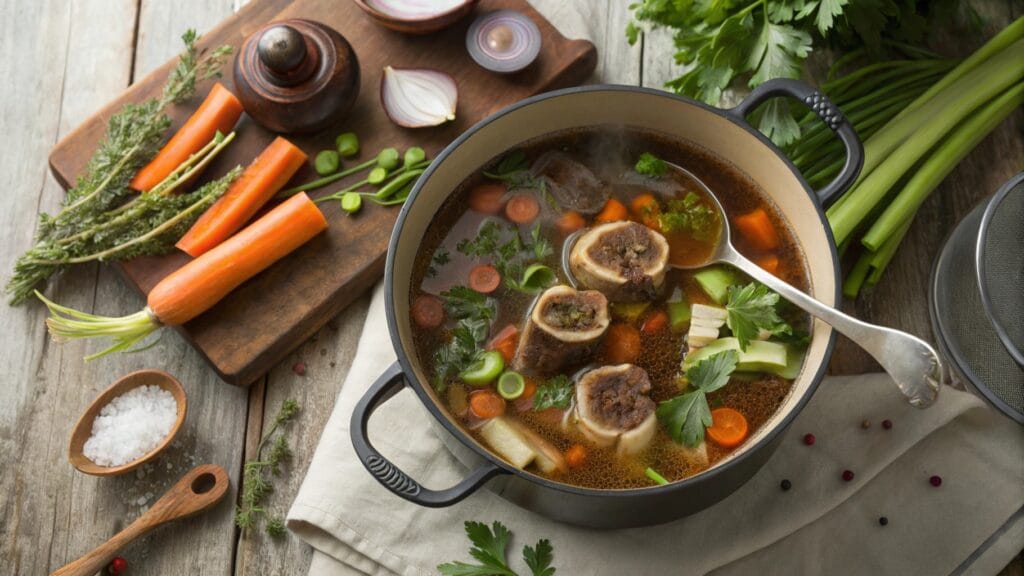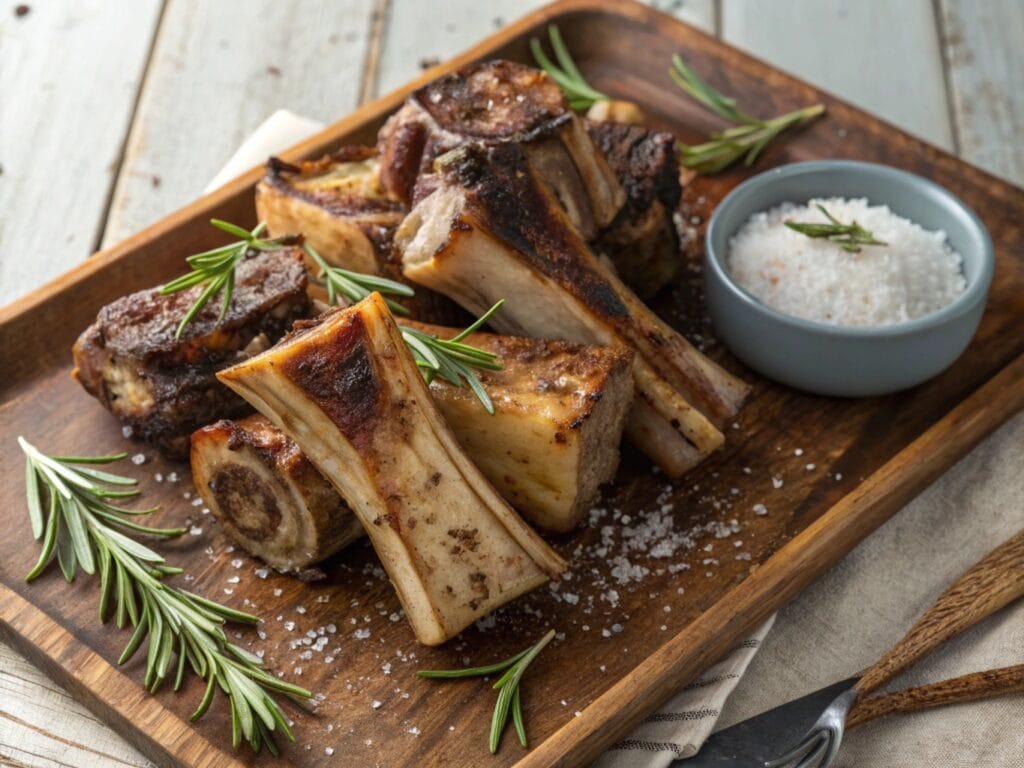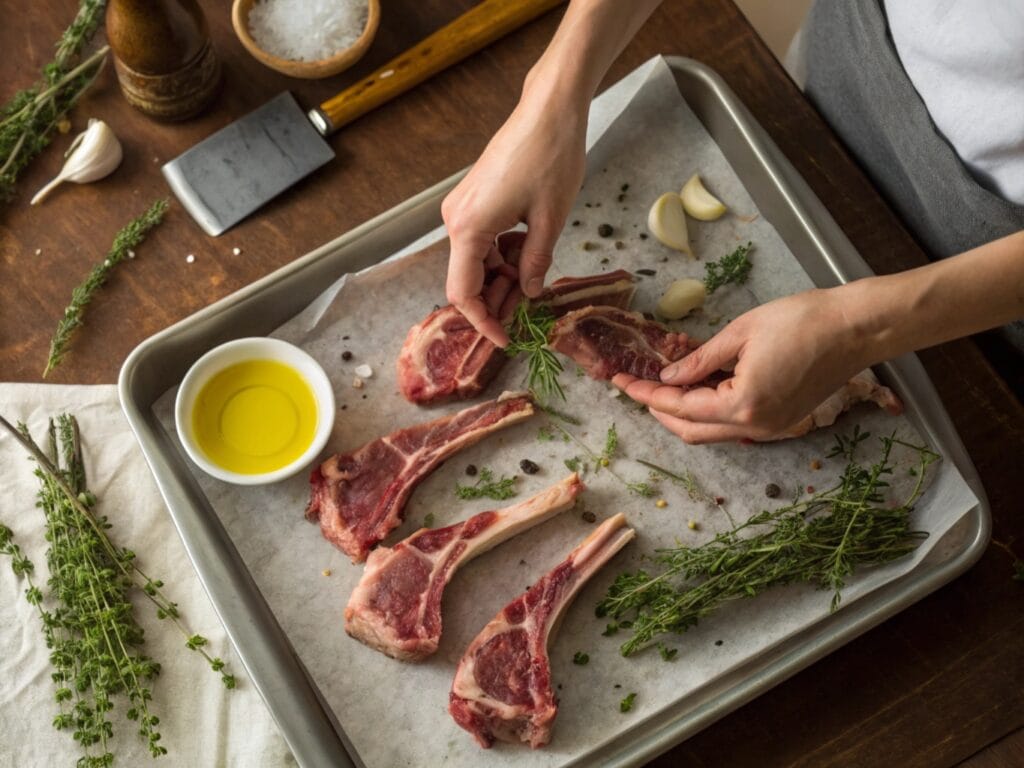Soup is one of those comforting dishes that warms both the body and soul, and the secret to a delicious, hearty broth often lies in the bones. But not all bones are created equal. Whether you’re making a rich beef broth, a delicate fish stock, or a versatile chicken soup, understanding which bones to use can elevate your culinary creations. In this guide, we’ll explore the types of bones ideal for soup, how to prepare them, and the cooking techniques that draw out maximum flavor and nutrients. Let’s dive in!

Introduction to Soup Bones
What Are Soup Bones?
Soup bones are the backbone—literally—of many beloved broths and stocks. These are the parts of animals that aren’t typically consumed as meat but hold tremendous flavor and nutrients. Think marrow bones, knuckle bones, or even chicken carcasses. They’re packed with collagen, which transforms into gelatin during cooking, giving your soup that silky texture we all love.
Unlike cuts of meat, soup bones have less flesh and more connective tissue. This makes them perfect for extracting flavors during long cooking processes. They’re also a cost-effective way to add depth to your dishes.
Why Are Soup Bones Important for Broth?
The magic of soup bones lies in their ability to impart flavor and health benefits simultaneously. When simmered, bones release minerals like calcium, magnesium, and phosphorus. They also contain collagen, which promotes healthy skin and joints. Add to that the umami flavors from marrow and the richness from fats, and you’ve got a winning ingredient.
Soup bones aren’t just about flavor; they’re a nutritional powerhouse. A well-prepared bone broth can support gut health, boost immunity, and even improve hydration thanks to its electrolyte content.
By choosing the right bones and giving them the care they deserve, you’ll be well on your way to mastering the art of making soup that’s both delicious and nourishing.
Types of Bones for Soups

When asking, “What bones are best for soup?”, the answer depends on the type of flavor and texture you’re aiming to achieve. Different bones bring unique qualities to the table, from richness to lightness. Let’s explore some popular options and their benefits.
Beef Bones for Soup: The Staple Choice
Beef bones are a go-to for hearty, robust broths. The marrow inside these bones is like liquid gold, releasing a deep, savory flavor as it simmers. Marrow bones, in particular, give soups a creamy texture and nutrient boost. On the other hand, knuckle bones are loaded with collagen, making them ideal for creating gelatin-rich stocks that thicken beautifully.
Want a soup with intense flavor and richness? Combine marrow and knuckle bones for a perfect balance. Adding these to your broth ensures a depth of flavor that satisfies every time.
Chicken Bones: Lightweight and Nutritious
If you’re after a lighter broth, chicken bones are your best bet. Chicken carcasses, wings, and even drumsticks are packed with collagen and impart a subtle yet savory flavor. They’re also versatile, working well in clear soups or more complex dishes.
Chicken bones simmer quickly compared to beef, so they’re perfect when you’re short on time. Plus, they’re an affordable and sustainable option, especially if you’re repurposing leftovers.
Pork Bones: A Hidden Gem
Pork bones might not be the first to come to mind when considering what bones are best for soup, but they’re a fantastic option, particularly for Asian-inspired broths. Spine and neck bones are rich in marrow and connective tissues, yielding a flavorful, slightly sweet stock.
If you’ve ever enjoyed a hearty bowl of ramen, there’s a good chance pork bones played a starring role. They add a unique depth of flavor that sets them apart from other options.
Fish Bones: A Delicate Option
For light, aromatic soups, fish bones are unbeatable. They cook quickly, infusing your broth with a delicate umami flavor. Ideal choices include the bones of white fish like cod or snapper. Avoid oily fish, as their strong taste can overpower the broth.
Fish bones pair perfectly with fresh herbs and citrus, making them a favorite for soups with a Mediterranean or Asian twist.
How to Choose the Best Soup Bones
Finding the best bones isn’t just about flavor—it’s about quality and purpose. When deciding what bones are best for soup, here’s what to keep in mind.
Fresh vs. Frozen Bones
Fresh bones are ideal for their robust flavor and nutrients, but frozen bones are a convenient alternative. If you opt for frozen, ensure they’ve been stored properly to avoid freezer burn, which can compromise taste.
Fresh bones also give you the advantage of inspecting their color and structure. Bright red or creamy white bones are a sign of freshness and quality.
Organic and Grass-Fed Options
Whenever possible, choose organic or grass-fed bones. These not only taste better but are also free from harmful additives and rich in nutrients. Grass-fed beef bones, for example, have higher omega-3 fatty acids, making them a healthier choice.
For chicken, look for free-range or organic options. They’re typically richer in flavor and have higher levels of collagen.
Bone Size and Structure
The size and type of bone can greatly influence your soup. Large bones like beef shanks are perfect for rich, hearty broths, while smaller ones like chicken wings are better suited for quick soups. Similarly, bones with more connective tissue, like pork neck bones, yield a thicker and more gelatinous stock.
By paying attention to these details, you’ll always have the perfect base for your soups, ensuring they’re both delicious and nutritious.
Preparing Soup Bones for Cooking

Preparing bones properly is essential for unlocking their full flavor potential. Whether you’re a seasoned cook or a beginner, these steps will ensure your soup starts with a solid foundation.
Roasting Bones: A Game Changer
When wondering what bones are best for soup, the preparation method can make all the difference. Roasting bones before cooking adds a rich, caramelized flavor to your broth. Start by spreading your chosen bones (like beef marrow or pork neck bones) on a baking sheet, lightly seasoned with salt. Roast them in the oven at 400°F until they’re golden brown.
This simple step creates layers of flavor, transforming your soup from ordinary to extraordinary. Roasting also helps remove impurities, resulting in a clearer broth.
Soaking for Purity
For a cleaner and fresher taste, soak your bones in cold water for 30 minutes to an hour before cooking. This step draws out blood and reduces the risk of cloudy broth. Especially important for beef or pork bones, soaking ensures that your stock looks as good as it tastes.
Cooking Methods for Soup Bones
Cooking soup bones isn’t just about boiling water—it’s a delicate process of coaxing out flavors and nutrients. Let’s look at three common methods for making the perfect broth.
Slow Cooking for Deep Flavors
A slow cooker is ideal for extracting the goodness from soup bones. Simply add your prepared bones, vegetables like onions and carrots, and a splash of apple cider vinegar to help draw out minerals. Let everything simmer on low for 12-24 hours. The result? A deeply flavorful, gelatin-rich broth that feels like a warm hug.
Pressure Cooking for Quick Results
If you’re short on time, a pressure cooker is your best friend. Place your bones and aromatics in the pot, add water, and cook on high pressure for about 2 hours. Despite the shorter cooking time, this method retains the nutrients and produces a beautifully concentrated stock.
Traditional Stovetop Techniques
Stovetop cooking is a classic choice for broth enthusiasts. Bring your bones and water to a gentle boil, skim off any foam, and reduce to a simmer. Let it cook for 6-12 hours, depending on the type of bones you’re using. This method allows for better control and produces a broth brimming with flavor.
Looking for more ways to enhance your soups? Check out the Soup Bones Guide on Tangle Recipes for additional tips and tricks.
Storing and Reusing Bones
Soup bones are too valuable to waste, even after their first use. Learning how to store and reuse them ensures you get the most out of these culinary gems.
Freezing Leftover Bones
If you have extra bones after making soup, don’t toss them! Store them in the freezer for future use. Place the bones in an airtight container or freezer bag, ensuring there’s no excess air to prevent freezer burn. Properly stored bones can last up to six months.
Freezing is especially helpful when you come across a good deal on what bones are best for soup. Stocking up ensures you’re always ready for your next hearty broth.
Reboiling Bones for Secondary Stock
Used bones still have plenty to offer. After making your first batch of broth, you can reuse them to make a lighter, secondary stock. Simply repeat the cooking process, but add fresh vegetables and aromatics for renewed flavor. While the second stock might not be as rich, it’s perfect for soups, stews, or cooking grains like rice or quinoa.
Reboiling is a sustainable and cost-effective way to make the most of your ingredients.
Frequently Asked Questions
When it comes to choosing what bones are best for soup, some questions often arise. Let’s address a few of the most common ones to help you perfect your soup-making skills.
Can I Use Bones from Cooked Meat?
Absolutely! Bones from roasted chicken or beef can add a smoky depth to your broth. Just be sure to remove any charred bits, as they can introduce a bitter taste.
How Long Should I Simmer Soup Bones?
The cooking time depends on the type of bones. Beef and pork bones benefit from long simmering, around 12-24 hours, to fully extract flavor and nutrients. Chicken bones require less time, about 6-8 hours, while fish bones need only 1-2 hours.
Are Soup Bones Safe for Pets?
While soup bones can be nutritious for pets, cooked bones are not safe as they can splinter. If you want to share your soup ingredients, opt for raw, meaty bones under supervision.
With this guide, you now have everything you need to decide what bones are best for soup and how to make the most of them. Start experimenting with different types of bones, preparation methods, and cooking techniques to create soups that warm the heart and nourish the soul.

